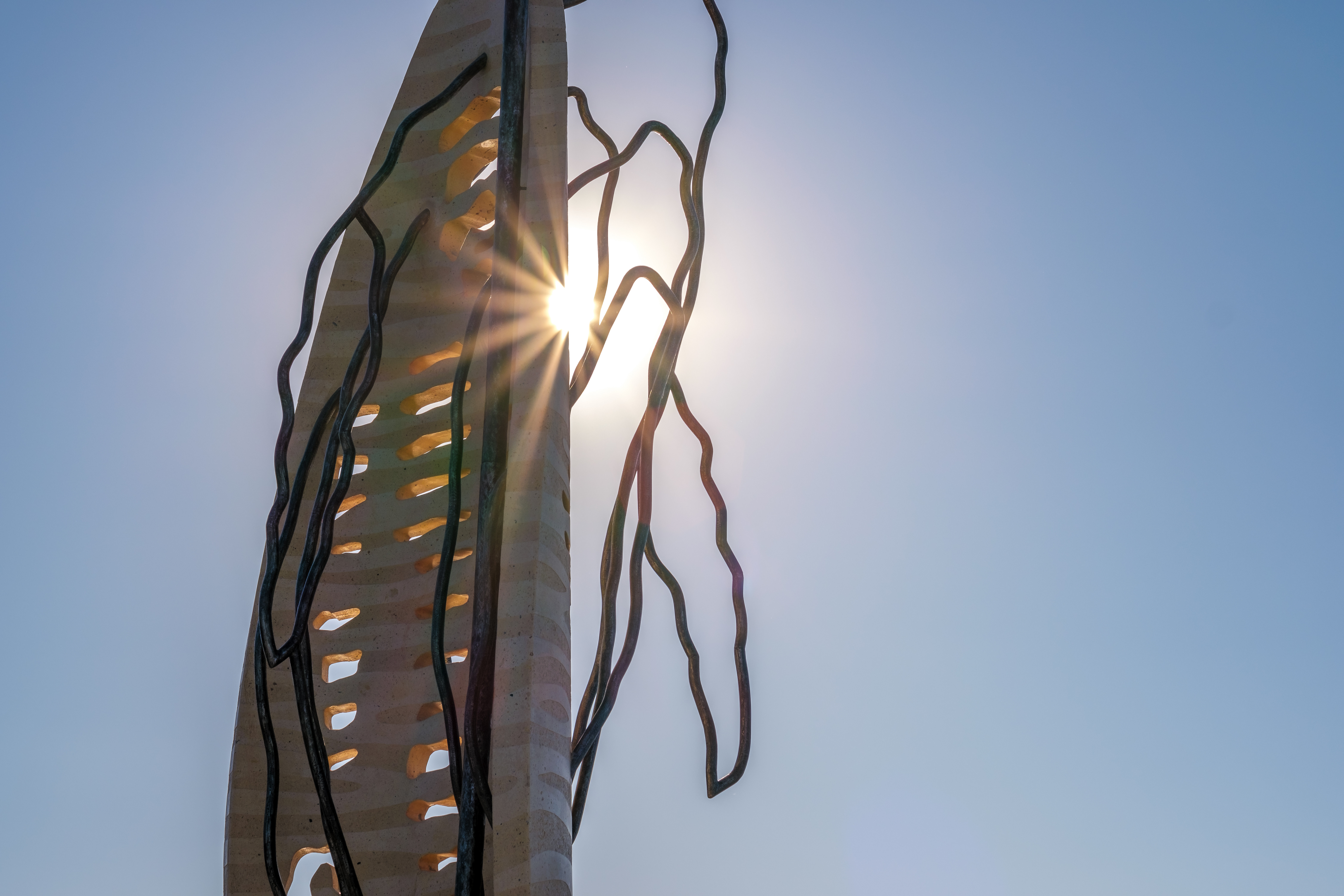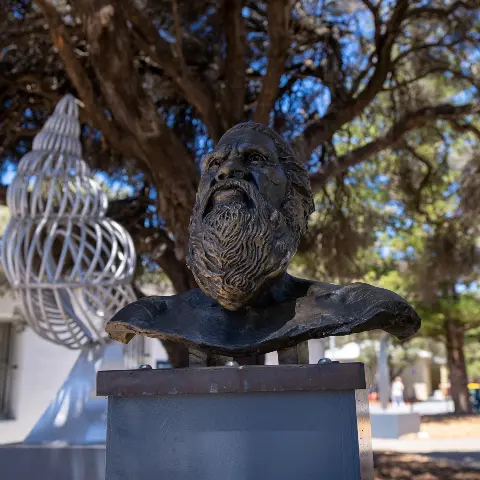Cultural Heritage
The island’s cultural heritage and reconciliation journey
A key element in managing Wadjemup / Rottnest Island is to protect, promote, and amplify the stories, heritage, and culture ingrained in the island. From its sorrowful history as an Aboriginal prison to the unique service it provided in WA’s nautical endeavours, and the important role the island played in WA’s wartime coastal defence matrix.
Through the respectful acknowledgement and engagement with the cultural heritage of Rottnest Island, there lies an opportunity for collective learning and understanding.
Rottnest Island Authority (RIA) is working in collaboration with the Whadjuk Noongar people and other Aboriginal groups and communities of Western Australia to acknowledge the past, promote reconciliation, and move forward together on a shared journey towards understanding and healing.
Five key cultural initiatives
The Rottnest Island Management Plan 2023-28 (RIMP), includes five key cultural initiatives. Undertaken in collaboration with a variety of stakeholder groups, these initiatives are designed to help promote an inclusive visitor experience that educates about and commemorates the island’s heritage.
Together we’re working to create conditions in which Whadjuk Noongar people, and the wider Aboriginal communities, can visit the island knowing their people’s history is acknowledged respectfully and truthfully.
Key initiatives
In 2023-24, the State Government committed $27.5 million to the Wadjemup Project Stage Two, an initiative that aims to acknowledge the history and ongoing impacts of Aboriginal incarceration and segregation on Wadjemup / Rottnest Island from 1838-1931.
Working in partnership with Whadjuk Noongar Traditional Owners and Aboriginal communities from around the state, the Wadjemup Project is working to deliver strategies for:
Truth-Telling to acknowledge Wadjemup’s history of Aboriginal incarceration and its role in the colonialisation of WA.
Ceremony to facilitate healing in line with Aboriginal cultural protocols.
Commemoration through memorialisation of the Quod (former Aboriginal prison) and the Wadjemup Aboriginal Burial Ground.
Key outcomes for Stage Two are:
Whadjuk-led Statewide Aboriginal consultation guided by the Whadjuk Wadjemup Cultural Authority elected in Stage One of the Project.
- Delivery of truth-telling and ceremony strategies for the island
- Commemoration of the Aboriginal Burial Ground through memorialisation.
- Conservation works for the Quod
- Agreement on the future use strategy for the Quod building (proposed to be delivered in Stage Three of the Wadjemup Project)
The Reconciliation Action Plan serves as a framework to foster connections and build strong relationships with Aboriginal and Torres Strait Islander peoples, which are rooted in mutual collaboration and trust. It is designed to build on what we’ve learned and achieved in previous RAPs, with a continued focus on the key areas of Relationships, Respect, Opportunities, and Governance.
Key outcomes
- Continued delivery of the actions identified in the Innovate Reconciliation Action Plan
- Increased Aboriginal and Torres Strait Islander employment at RIA and increased Aboriginal and Torres Strait Islander participation in the island’s management.
- Development of the next Reconciliation Action Plan.
RIA respectfully acknowledges the Whadjuk Noongar people as the Traditional Owners of Wadjemup. There are registered Aboriginal heritage sites across Wadjemup which are protected under the Aboriginal Heritage Act 1972.
Key outcomes
- Management of Aboriginal sites in accordance with the Aboriginal Heritage Act (1972) and the Noongar Standard Heritage Agreement
There are buildings on Wadjemup that date back to the 1840s. These historic cottages and heritage buildings provide a unique visitor experience, and many have been converted into accommodation options as part of Stay Rottnest.
However, due to heritage-related constraints, the cost of upgrading these dwellings is extremely high. RIA is currently investigating options for a specific investment program to manage this refurbishment, and create a design benchmark for further heritage building renovation.
Key outcomes
- Seek funding and deliver Stay Rottnest heritage unit refurbishments
Rottnest Island has played an important part in the defence of Australia during both the First and Second World Wars. You can still find and explore some of the coastal defence infrastructure today. By implementing the DHIP, together with key stakeholders, RIA aim to partner with interested organisations to deliver a diverse range of projects that support the long-term interpretation of the defence heritage of Rottnest Island.
Key outcomes
- Seek external funding and implement the DHIP at a range of sites across the island


.tmb-fallback.webp?Culture=en&sfvrsn=23a01cd4_1)

